%20(1).png)
A Computer-Raised Millennial's Retrospective On Digital Aesthetic
Growing up alongside the Internet (i.e., Nineties babies) might make you feel a certain kinship with clear, colorful plastic. For a few years in the early days of the web, every piece of tech was see-through– and, honestly, it was magnificent.
Laptops, game stations, home phones, and even calculators were made with all their glorious wires and gears exposed.
There was something almost scientific about the design. I can recall being ten years old and mesmerized by the inside of my best friend’s GameBoy Advance. I was a scientist studying the inner workings of a creature never before seen.
Transculescent tech is only one stop on our metaphorical railroad. The journey to the Internet’s established identity is a rocky, winding road. Early Internet aesthetics – and its subsequent evolution – is interwoven with culture, art, and society’s transition between the 20th and 21st Centuries.
To understand the Internet now, we should understand the Internet before.
A Timeline of Internet Aesthetics
See-Through Hypertech | Approx. 1990-2005
Anyone nearing the age of 30 or so remembers the see-through tech phenomenon. Primarily seen in the gaming industry, there was a time when every new piece of tech featured multiple see-through variations. We were unsatisfied with clear, white plastic, so we saw GameBoy Advances in transparent purple, green, and blue. Let me tell you: as a kid growing up in this era, there was nothing I wanted more than a sweet piece of see-through gaming equipment.
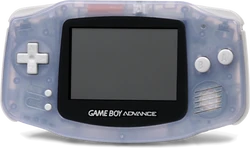
[1]
MP3 players and walkmen got the translucent treatment, too. With personal technology suddenly flooding the markets of everyday folks, a fixation with how it all worked consumed consumers.
Interestingly enough, this aesthetic was born from the prison system. Technology needed to be see-through for the sake of security. [2] An x-ray style glimpse inside the tech was much simpler than completely dismantling them.
As we know, the early 2000s ushered in an era of hypervigilance and security. Following 9/11, Americans and the world were suddenly much more preoccupied with technological scrutiny for the safety of others. Harmless tech could now be something more dangerous in disguise.
Much like the TSA, society seemed to agree that transparency was key.
Pixelated Charm | Approx. 1995-2003
When computers went from professional luxury to personal commodity, we saw them adopt a level of flair. Desktops were interactive, colorful, and animated. At one time, you could load up Internet Explorer and download (sometimes safely) a scene of a witch’s home, complete with floating books and moving spiders.
On the simpler side, pixelated characters would appear in apps like Microsoft Word or Internet Explorer. Famously, Clippit or, more commonly, Clippy – literally just a paperclip with eyes – used to pester Microsoft Word users in a bid to be “helpful.” Most of the time, he just repeated tutorial phrases, but he was undeniably charming. That was truly the vibe of the time: charm.
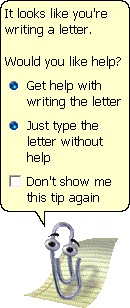
[3]
There’s something about his cartoon eyes, “Post-It Note” colored speech bubble, and pixelated looseleaf that makes you hate to like this little mascot. Every computer user I grew up with laments the loss of Word’s sweet little paper clip.
Internet Awesomesauce [4] | Approx. 2007-2012
Coined by Alex Edwards at the Consumer Aesthetics Research Institute, Internet Awesomesauce is a digital aesthetic anyone over 20 will recognize as a particularly cringy era online. Like a digital Renaissance or Age of Enlightenment, this period saw a massive celebration of web culture.
The colors were bright. Web cartoons maintained an ironic, amateur-on-purpose look. We used Adobe Photoshop to edit explosions and rainbows into our profile pics. A certain sense of whimsy, humor, and surrealism permeated every corner of the web.
Maybe the ultimate aesthetic example of this era is a flash game called Robot Unicorn Attack (yes, that’s the actual title). [5] When I tell you that this game ruled my life as a tween, I mean it. I played this silly platformer day after day after day.
Your player character, the titular robot unicorn, needs to run, jump, blast its way through a dazzlingly bright and busy setting.
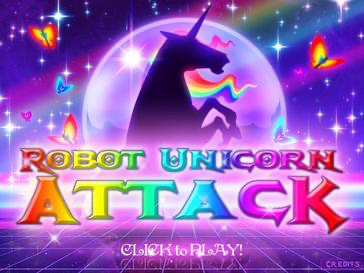
[6]
The title screen tells you everything: deep, saturated colors; a cluttered, maximalist design; and, importantly, the combination of “random” words – robot, unicorn, attack. In this era, “random” or “awesomesauce” were highly sought-after praise.
Me Gusta Le Rage Era | Approx. 2004-2012
Running almost concurrently with the Internet Awesomesauce era, Me Gusta Le Rage was a time defined by – largely – hastily drawn four-panel comics. These masterpieces were colloquially known as Rage Comics. [7] This trend appeared with the emergence of popular forum pages, particularly 4Chan. The ability to post anonymously, without required context, gave millions of posters a chance to be online comedians.
I had my fair share of rage comics saved to my Windows Desktop computer in a file titled "Le Memes." I'll never be sure why we wove French and Spanish into these pieces. Someone did it once, and, like Tamagotchis in the early 2000s, it just took off.
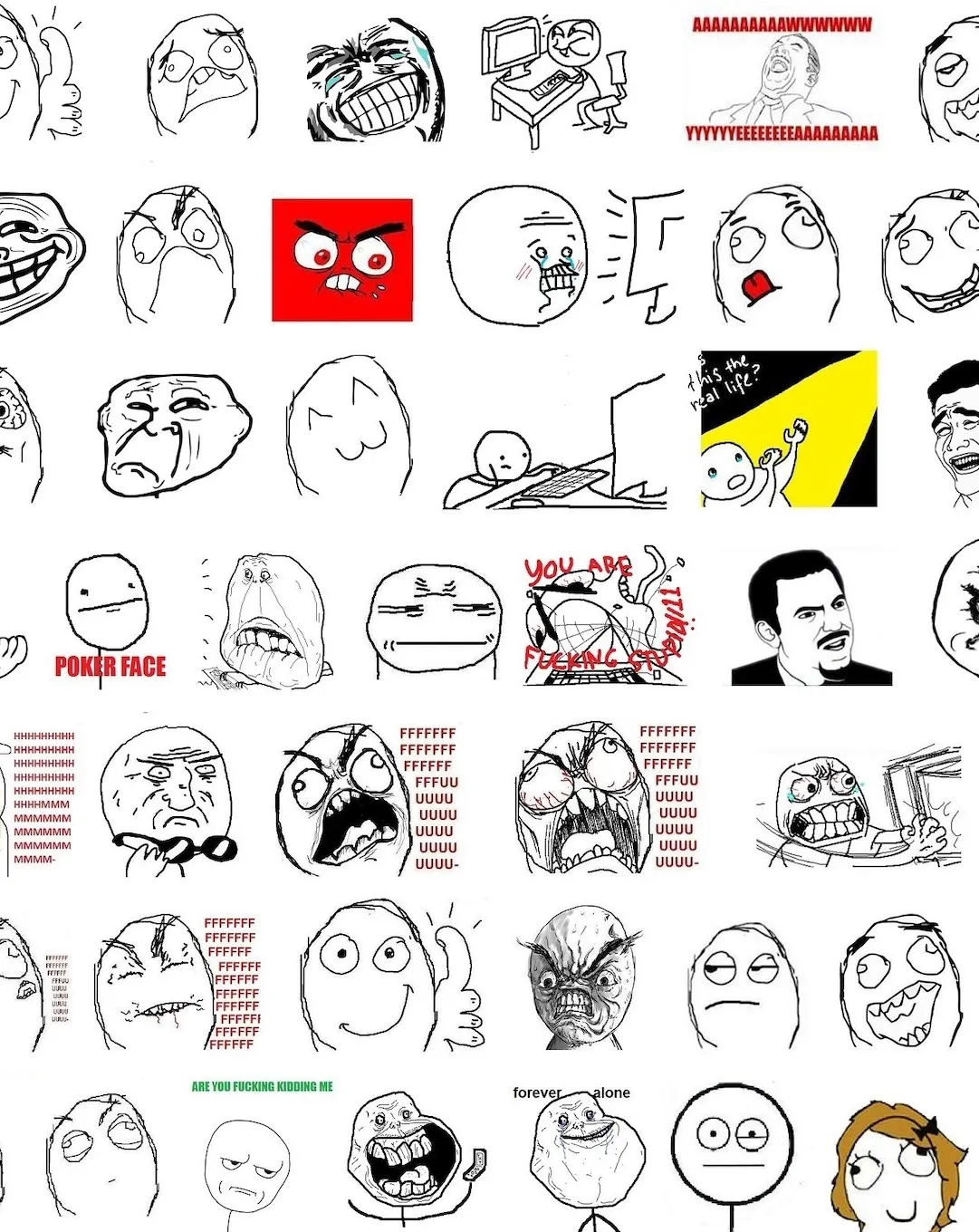
[8]
Key to this era was relatability. We didn’t quite have an influencer culture established, but Internet users craved a sense of kinship with others online. Rage Comics and their corresponding cast of characters spoke to the public thanks to their simplicity, relatable messaging, and clear-as-day storylines.
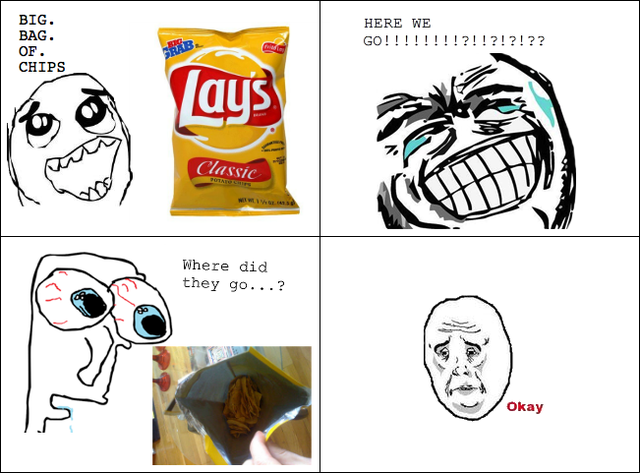
[9]
Reading Rage Comics on Memebase felt like a reiteration of the silent film. Each panel lays out a narrative in the simplest form possible: beginning, problem, conclusion.
Since this era and Internet Awesomesauce blended in places, you would often see a combination of the aesthetics.
Tumblr Grunge-Twee | Approx. 2008-2016
If you were on Tumblr during these years, you know exactly what I mean. If you weren’t, but you watched 500 Days of Summer or knew teenagers around this time, you also know what I mean. For this era, we can thank Zooey Deschannel, The Arctic Monkeys’ AM album, and American Apparel.
Fed up with the maximalism of eras before, the Internet made a massive shift towards intentional almost-minimalism. While we didn’t lose the rough edges of Internet Awesomesauce, we saw digital aesthetics becoming more regimented and specifically defined. Fashion blogs featured monochromatic looks and models with messy buns, dark eyeliner, and earth tones.
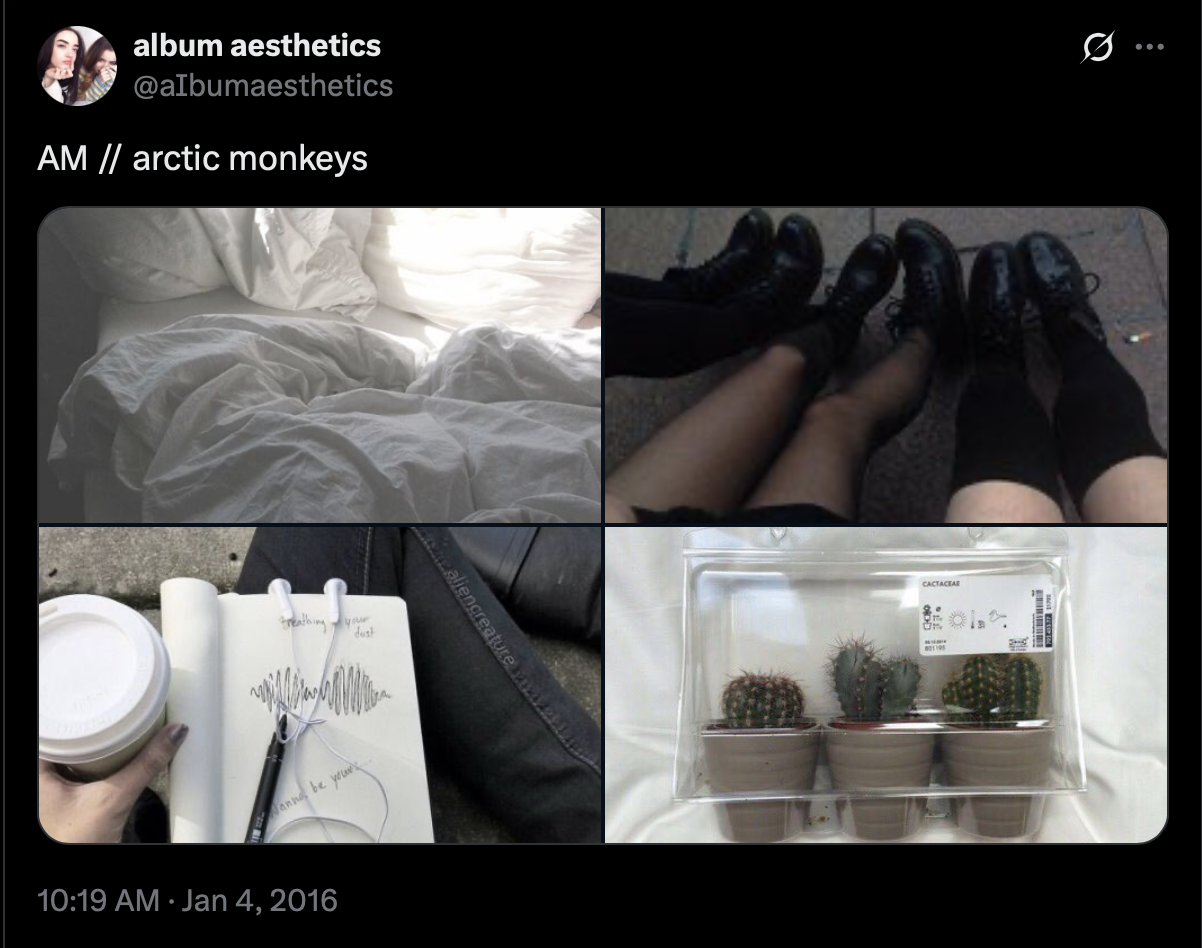
[10]
This time, online was all about self-definition. There was no longer just mainstream and alternative. Instead, alternative Internet fashion split into hundreds of subgroups, which have become thousands since then. You were no longer an alternative; you were soft grunge. [11] You were no longer just goth; you were pastel goth. [12] Subcategories and groups based on fashion identities quickly took the Internet by stranglehold.
Fandom culture [13] saw major growth in this time, as well. While fandoms have been alive since Captain Kirk and First Officer Spock had undeniable on-screen tension, [14] we actually saw whole communities form on fandom aesthetics during this era.
Homestuck, [15] for example, exploded with popularity. Cosplay, edits, and entire pages dedicated to the web series permeated every major social networking site. Even if you have never read Homestuck, you definitely recognize these sorts of white-grey, sometimes horned creatures. I know I do.
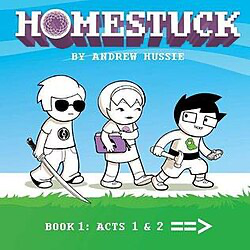
[16]
Watching these groups, to me, felt something like watching a parade. A parade that, for some reason, included people arguing almost incessantly.
I’m not innocent of that. I was just arguing in a different fandom.
Well, Actually… | Approx. 2013-2019
In the mid-2010s, the Internet collectively agreed we had been too juvenile for too long. Gone were the days of Nyan Cat and Breadfish. All at once, things got really serious.
Internet atheism and rational, sort of Socratic discussions were daily. People wrote in complete, capitalized, and grammatically-sound sentences – a far shot from the “I can haz cheezburger?” era just before this.
Now that the public had a grasp of the Internet as a creative device, the culture shifted to making it a tool of debate and communication. This was the era of getting into serious, multi-paragraph arguments with strangers on Reddit. Everyone started using this new-fangled app called Instagram to post black-and-white photos with lengthy captions. Intellectualism was the name of the game.
Intellectualism and playing Devil’s Advocate. If you had the chance, you were telling a stranger that, “well, actually…” their perspective was wrong and why.
So prominent was this phenomenon that a subreddit documenting it persists today.
COVID Stir-Crazy | 2020-2023
A few years back, everyone on the planet lost their routines, schedules, and social lives in what felt like the blink of an eye.
The COVID-19 pandemic took the world by storm. Society slowed to a crawl. Most people spent weeks to months indoors, only socializing with live-in family members or partners. Parties and get-togethers were hosted over Zoom.
In the United States alone, 1,193,165 Americans lost their lives. [17]
Human beings are social creatures not designed to cope with grief on such a mammoth scale. With only the Internet and our own devices, many Internet did what people do in times of great turmoil – they created. A lot of times, that creation came at the stake of someone’s comfort, health, or sanity.
That said, TikTok in 2020 was the catalyst for digital aesthetic culture as we know it today. We have Vine (2012-2019), to thank for the success of another short-video app.
As the new and only meeting place available, TikTok birthed more aesthetic trends than I can possibly count. “Bored in the House” was everybody’s earworm for months. Sick of the constant dread and gravity of the world outside, web users moved back towards the frivolity of earlier times.
We started to see a resurgence in “random” humor, though Gen-Z Internet users would shy away from that label. Music, dance, and comedy were a digital light beacon in impossible times.
Macabre Hyper-Irony | 2023-Present
Back in the real world, millions still turn to the Internet for this constructed sense of community – myself included. The kindred nature of suffering together has bonded people over centuries, and COVID-19 is no different. Now, we as a global society are faced with two worlds: the one outside and the one in our pocket. In many ways, for many people, one has become equally as real as the other.
TikTok user Peyton Vanest (@pvanny_) runs a satirical game show cleverly titled “Google is Free.” Here, he tackles political issues and commentary with the added ironic layer of a pseudo-game show. It is where irony and education meet that we find ourselves online today.
Humor is minimal but often tied to more serious topics. Jokes about living with depression or struggling to eat are now accompanied with Hello Kitty. It’s the sort of halfway commitment that allows posters the comfort room of plausible deniability.
A phrase we haven’t seen since the mid-2010s comes up a lot these days: “It’s just a joke.”
Now, as I write this in 2025, I see the Internet as two distinct creatures: one that informs and connects and another that misinforms and divides.
These simultaneous truths are what I call Macabre Hyper-Irony.
What Internet Aesthetics Can Teach Us About Branding in 2025
Looking back at decades of Internet style isn’t just nostalgic—it’s strategic. Each digital aesthetic movement tells us how people felt in a moment of time. What they wanted. What they feared. What made them laugh. These signals are everything for brands trying to resonate in the current moment.
The lesson? Internet aesthetics are more than vibes. They’re reflections of culture, identity, and community—and the brands that understand those shifts are the ones that stay relevant.
Here’s how brands can apply Internet history to today’s content strategy:
- Revisit your brand voice: Are you clear, consistent, and culturally in tune? Would your audience describe your brand tone as a Clippy or a Robot Unicorn? Understanding how your audience feels online today helps you craft a voice that lands.
- Use nostalgia without pandering: Early-Internet references resonate strongly with Millennial and Gen Z audiences—but only when done with intention. Don’t just slap pixel art on a hoodie. Tell the story that makes the reference matter.
- Stay flexible and self-aware: As you’ve read, Internet culture moves in fast, ironic cycles. Your brand doesn’t have to chase every trend—but you should be able to evolve when your audience does.
- Honor digital subcultures: Whether it’s fandom communities or micro-trends like corecore and cottagecore, digital subgroups shape mainstream marketing more than ever. Support them, don’t steal from them.
Your Brand Is Part of Internet History, Too
The moment you put your business online, you become part of this ongoing cultural evolution. Your fonts, your memes, your tone—it all says something. Make it count.
At Glass Cactus Marketing, we don’t just follow Internet trends—we understand them. We study online behavior, social signals, and creative history to help your brand show up authentically in any digital space.
Whether you're building a campaign around TikTok aesthetics or bringing early-web flair back to your packaging, we’ll help you tap into what really makes the web work—emotion, memory, and meaning.
Final Thought: Aesthetic Is Strategy
The Internet isn’t just a place we use. It’s a world we’ve built together—layer by layer, meme by meme, hashtag by hashtag.
If your brand wants to connect deeply, you need more than good design. You need historical context, cultural fluency, and emotional intelligence.
Let’s bring your message to the Internet not just beautifully, but meaningfully.
%201.avif)

.svg)